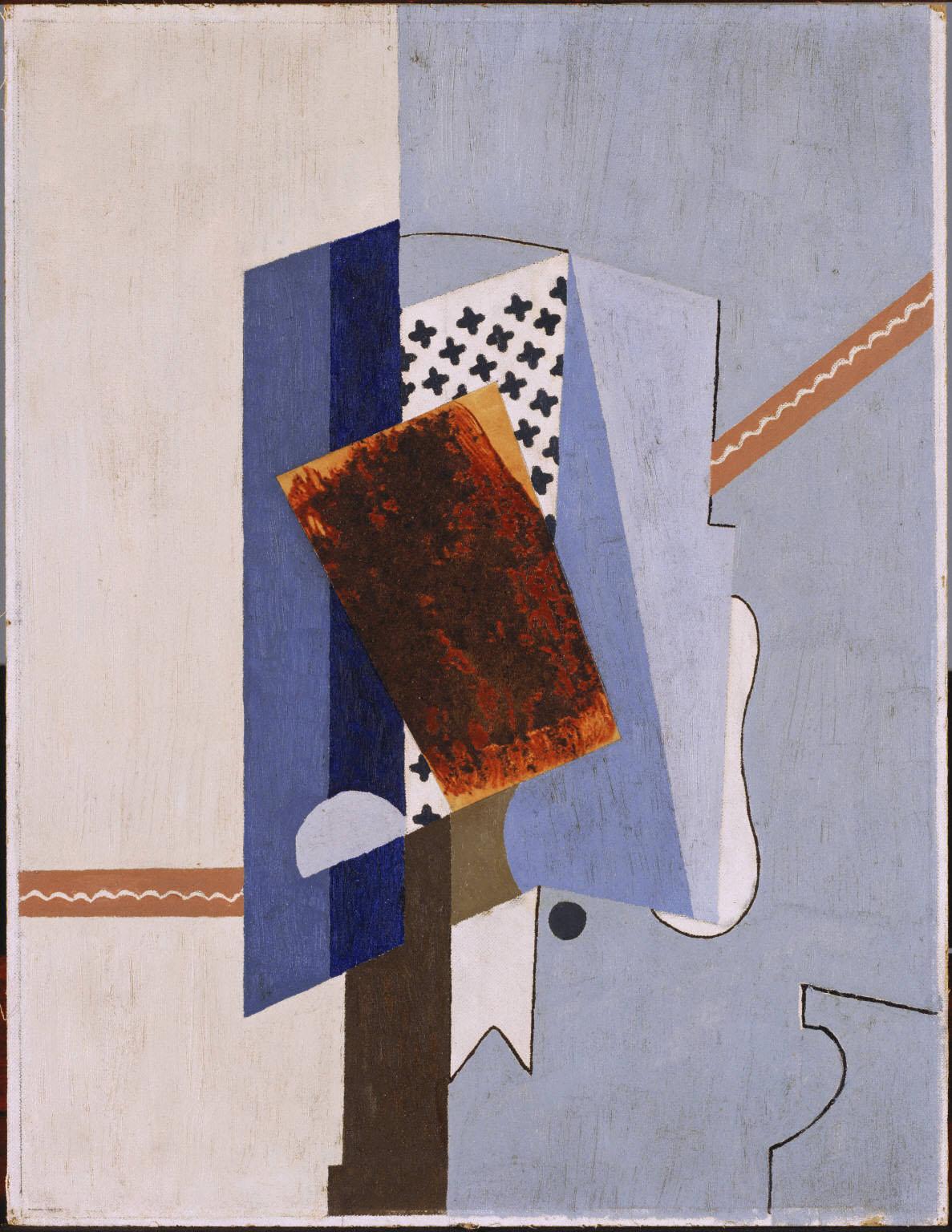Composition
Albert Eugene Gallatin ( 1941 )

Although A. E. Gallatin was best known as an avant-garde collector, he painted sporadically during his career, most regularly during the later years of his life. A wealthy patrician, Gallatin cut an unusual figure among the younger, liberal members of the avant-garde art movement; however, he shared their enthusiasm for avant-garde styles in art, and had the advantage of being able to purchase works he admired.
Composition typifies Gallatin’s mature work in which multitextured overlapping and intersecting forms are anchored by radiating, decorative bands against a flat background. The work’s surface is emphasized by the central brown-paper collage element, which was covered with a fibrous substance. Its texture and dark color add an element of coarseness to an otherwise pristine image in which Gallatin used his characteristic grays, subdued yellows, soft blues, rusts, and ochers.
Duncan Phillips purchased Composition in 1945 after seeing a color illustration in a contemporary publication. However, his admiration for Gallatin had begun as early as 1914. Gallatin’s collection of the mid-1910s had appealed to Phillips because it expressed “its owner’s personal taste and his sense of the kinship and the friendship of things,” and it may have stimulated Phillips’s own collecting ambitions. Their friendship may have further motivated Phillips to become an open-minded collector of works by his contemporary. However, their tastes diverged over the years, and it was probably more out of their longstanding, respectful friendship than enthusiasm for Gallatin’s painting that Phillips purchased Composition. While it was pleasing in color and design, its sleek, cerebral quality masked the personality of the painter, which was a quality in painting that most appealed to Phillips.